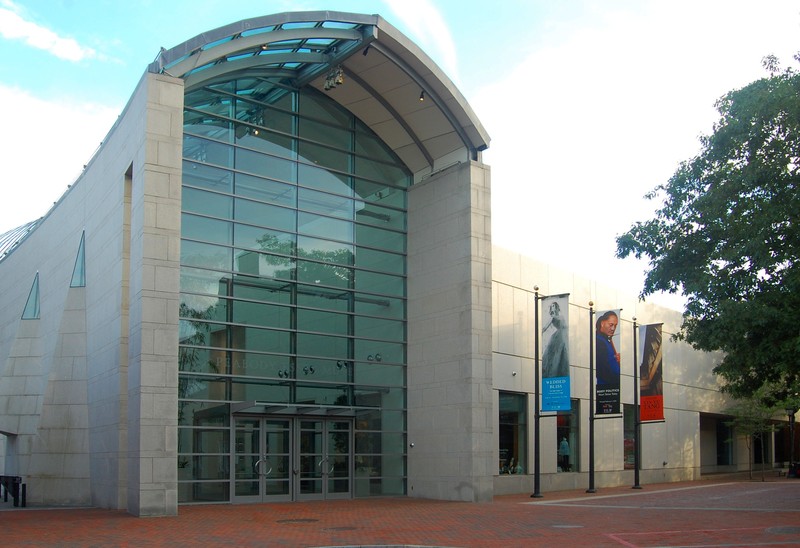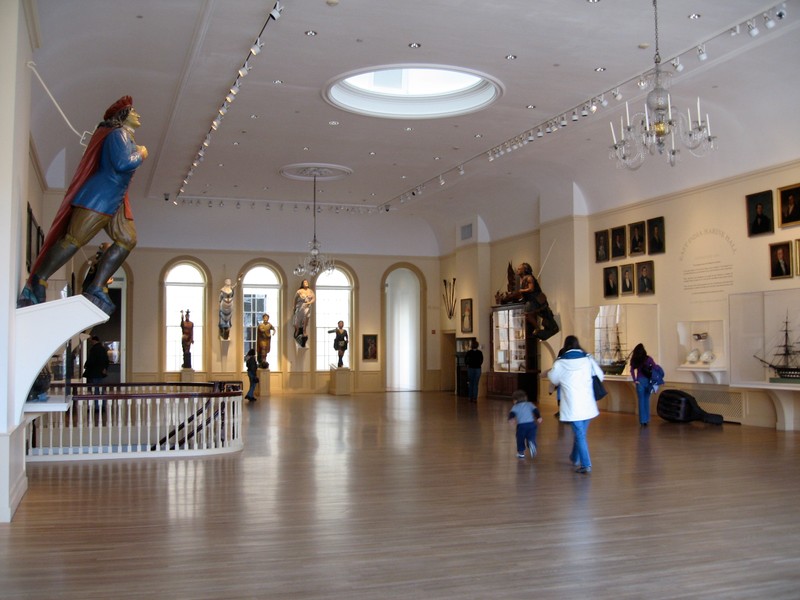Peabody Essex Museum
Introduction
Text-to-speech Audio
Images
The main entrance to the Peabody Essex Museum.

View of the museum interior of the East India Marine Hall. Photo by Jared and Corin. Licensed under CC BY-SA 2.0 via Wikimedia Commons.

Backstory and Context
Text-to-speech Audio
The East India Marine Society was one of a number of similar early American maritime societies, existing in most of the larger towns of the Eastern seaboard. Founded in 1799 by Salem’s merchants and sea-captains, a group of Salem entrepreneur’s members in the Society, sailed around Cape Horn and the Cape of Good Hope and were required by the society's charter to collect "natural and artificial curiosities”. Society members brought to Salem a diverse collection of objects from the northwest coast of America, Asia, Africa, Oceania, India and elsewhere. By 1825, the society moved into its own building, East India Marine Hall, which today contains the original display cases and some of the very first objects collected.
At this time Salem was also home to the Essex Historical Society (founded in 1821), which celebrated the area’s rich community history, and the Essex County Natural History Society (founded in 1833), which focused on the county’s natural wonders. In 1848, these two organizations merged and formed the Essex Institute. This consolidation brought together extensive and far-ranging collections, including natural specimens, ethnological objects, books and historical memorabilia, all focusing on the area in and around Essex County.
In the late 1860s, the Peabody Academy of Science, descendent organization of the India Marine Society, received natural history and archaeology collections from the Essex Institute, and in turn the Peabody Academy of Science transferred its historical collections to the Essex. In the early 20th century, the Peabody Academy of Science changed its name to the Peabody Museum of Salem.
In 1992 the Peabody Museum of Salem merged with the Essex Institute, and this way created the Peabody Essex Museum. Since then the museum went through two phases of extensions and renovations. The newly expanded Peabody Essex Museum opened on June 21, 2003. The museum’s current collection exceeds 2.4 million works of art and culture and includes 24 historic buildings, four of which are nationally registered historic landmarks. The collections are showcasing American, Asian and Asian Export, African, Contemporary, Maritime, Native American, and Oceanic art, as well as Architecture, Fashion and Textiles, and Photography.
